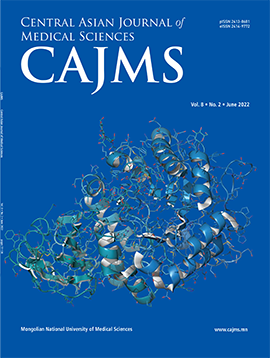CBCT Evaluation of Cortical Bone Thickness for Orthodontic Mini-Screw
DOI:
https://doi.org/10.24079/cajms.2021.09.013Keywords:
CBCT, Dentofacial Deformities, Cortical Bone, Bone Anchored DevicesAbstract
Objectives: This study aimed to assess mandibular and maxillary cortical bone thickness using a cone beam computer tomogram (CBCT) image to determine the safe zone to insert mini-screws. Methods: In this three factorial design study, we included 100 subjects divided into age group 1 (age 16-44 yrs.) and age group 2 (age 26-42 yrs.) that had taken a CBCT in the Department of Orthodontics, School of Dentistry, Mongolian National University Medical Sciences (MNUMS) from 2014-2021 We used CBCT images in the 100 subjects that were obtained with DENTRI (HDXWILL, Seoul, Korea) using OnDemand3D software for linear measurements. Results: The maxillary cortical bone thickness was heavier in the male gender at the premolar region level of 5 mm in age group I. Maximum maxillary cortical bone thickness as measured 7 mm from the Cemento-Enamel Junction (CEJ) between the 1st premolar and 2nd premolar was 0.99 mm, and the mandibular cortical bone thickness as measured 7 mm from the CEJ between the 1st molar and 2nd molar was 2.11 mm. Conclusion: This suggests that the maxillar and mandibular molar teeth cortical bone thickness on the buccal side of 7mm from the CEJ is considered to be the safest position to implant mini screws in cortical bone.
Downloads
256
Downloads
Published
How to Cite
Issue
Section
License
Copyright (c) 2021 Mongolian National University of Medical Sciences

This work is licensed under a Creative Commons Attribution-NonCommercial 4.0 International License.




